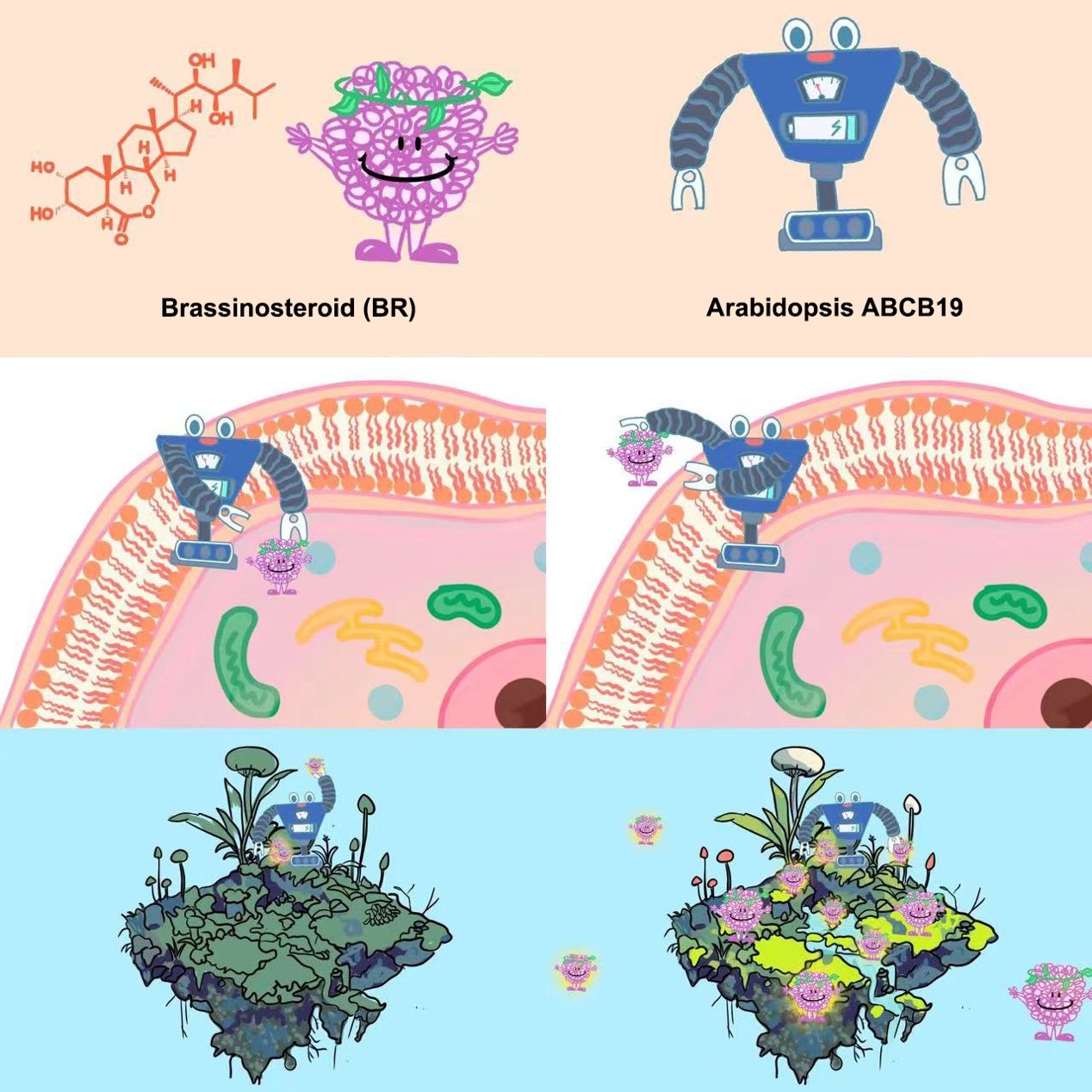When you are reading this article, there are multiple hormones working diligently inside your body to stabilize your health status. For plants, it is impossible for them to grow and reproduce without being regulated by phytohormones. One of the phytohormones is the brassinosteroid (BR) hormones, also named as the sixth phytohormone.
In a study published in Science on March 22, 2024,the researchers led by Prof. SUN Linfeng from the Division of Life Sciences and Medicine, the University of Science and Technology of China (USTC) of the Chinese Academy of Sciences, together with Prof. Eugenia Russinova from the VIB-UGent Center for Plant Systems Biology, discovered the first BR exporter and presented its structure in both the substrate-unbound and the BR-bound states.
BR hormones play a key role in regulating plant development and physiology, including adaptation to environmental stresses. They are widely used in agriculture due to the high economic benefits and impressive effects. Previous studies on BR have clarified their synthesis, metabolism and signaling processes, while the key mechanism by which the synthesized BR inside the cell is exported out to execute its function remains unknown. The first BR exporter recognized in this study is a major step forward.
The newly identified BR exporter, ABCB19, used to be commonly recognized as a transporter protein for another crucial phytohormone, auxin. However, the mutant phenotype of ABCB19 does not completely match that of typical auxin transporter proteins. Based on this, the researchers raised a bold question of whether ABCB19 has substrates other than auxin.
To address this question, the researchers conducted various experiments. They first tested the ATPase activities of the Arabidopsis ABCB19 in the presence of different phytohormones including auxins and BRs. The results showed that the ATPase activity of ABCB19 can be stimulated by the bioactive BRs in a dose-dependent manner, but not by auxins or the BR-biosynthesis precursors. Meanwhile, in vitro and in vivo assays were used to evaluate the transport of BRs by ABCB19.
Using cryo-electron microscopy, the researchers were able to witness the process of ABCB9 exporting BRs, as well as to determine the unique architecture of ABCB19 which enables it to bind with BRs.

ABCB19 exporting brassinosteroid (BR) in plants. (Image by QIE Mingqing)
Furthermore, they performed plant physiological and genetic analyses to confirm the role of ABCB19 in BR signaling. All the results pointed to the conclusion that BR is the substrate of ABCB19.
“We were quite puzzled for a while because our experiment results didn’t agree with the common belief that ABCB19 is an auxin exporter. But when it turned out that BR is also its substrate, we were so thrilled,” said YING Wei, first author of the study.
“Past research focused more on the cell level, which might be the reason why all these years we overlooked the fact that BR is the transport substrate,” explained Prof. SUN Linfeng.
This study provides new ideas for research on the ABC family. “Future research will focus on unravelling the mechanisms regulating the ABCB19 activation and substrate preference and identifying additional BR exporters. Such mechanisms will help us design more effective strategies to improve plant productivity and resilience via modulating endogenous BR amounts and distribution,” said Prof. Eugenia Russinova.
(Written by LIU Qinyan and ZHANG Yuhuan, edited by ZHANG Yihang, USTC News Center)